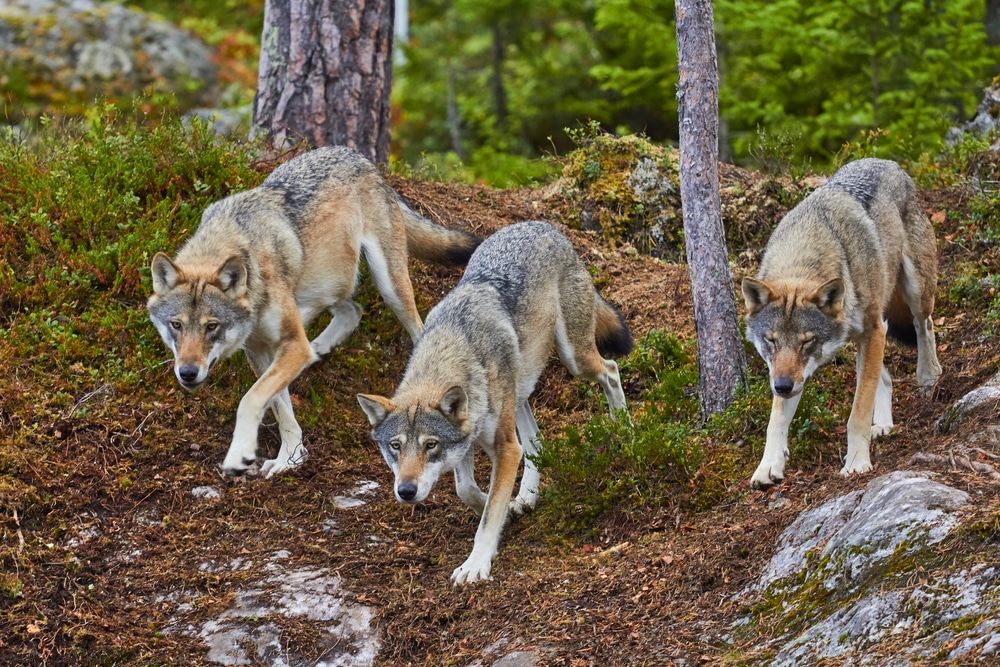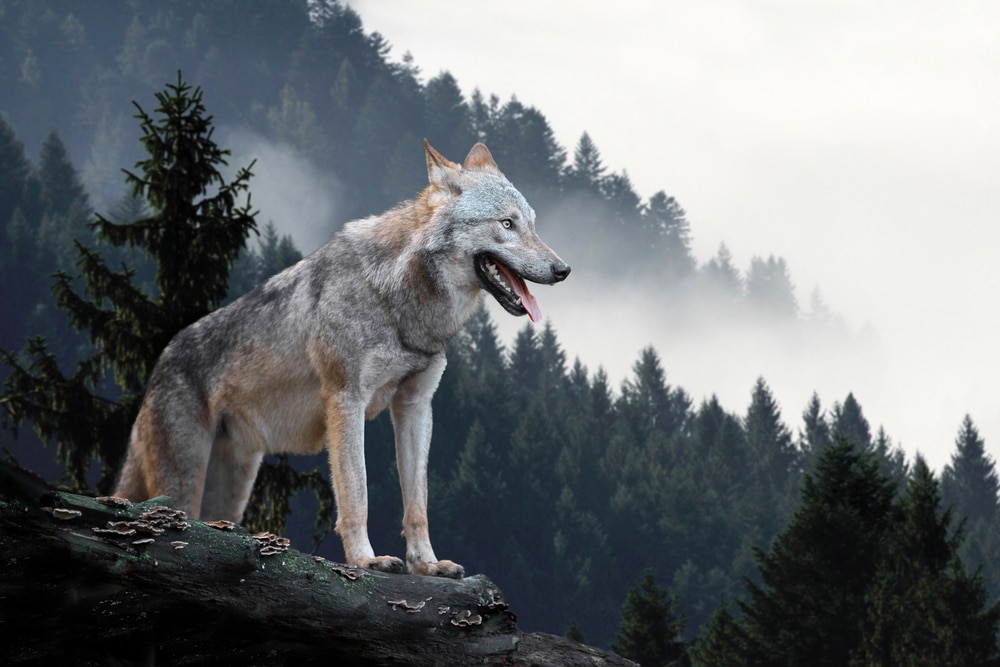Table of Contents
It is a known fact that wolves are known as the symbol of admiration and fear. And as the trend of hunting is growing, so is the admiration of hunt lovers for hunting different animals. This is where the wolves kick in. Wolf hunt is a method that needs precise guidance and tips to understand the behavior first. It is because wolves are not just like other ordinary animals and there is a need to study their reflexes if you want a smooth hunt activity. So, to help you with that, we have crafted an article guide that will not just make you learn tips but also different strategies for a smooth wolf hunt. Now, it’s time to set up the hunting camp and get ready for the wolf hunt.
Understanding the Quarry for Wolf Hunt

It is important that you understand the behavior of your target completely before hunting and trapping them. So is the case with wolf hunting. As complex as they are, it is of paramount importance that you understand their behavior in detail.
1. Comprehending Social Framework is Important for Wolf Hunt
First of all, you should have a know-how about the social framework of the wolf creature. They are known to live in packs, wolves are gregarious animals that usually consist of an alpha male and female, their young, and occasionally other adults in lower positions. Since pack dynamics affect their behavior, communication, and hunting tactics, it is essential to comprehend pack dynamics. However, where wolf populations have grown, there have been more disputes between people and animals, which has prompted requests for the Department of Natural Resources to step in with regulatory measures.
2. Reachability
Wolves are territorial animals, and their packs protect their territories from outsiders. They use vocalizations and scent indicators to mark their boundaries, which hunters might use to locate possible hunting areas. It helps to anticipate a pack’s movements if you know where they frequent. Furthermore, Human-wolf conflicts have led to the creation of wolf trapping seasons and wolf trapping certification in some areas.
3. Learn Residences and Habitat Pattern for Wolf Hunt
Because of the way they adapt, wolves can live in a wide range of environments, including mountains, grasslands, tundra, and forests. They do, however, choose locations with plenty of prey, water sources, and cover for hiding and denning. Hunters can reduce the number of possible hunting sites by having a better understanding of their preferred habitats. Even though wolves are renowned for their adaptability and resilience, habitat loss and fragmentation present serious threats to their long-term existence.
4. Understand their Communication Tactics for Seamless Wolf Hunt
A variety of sounds, such as howls, growls, whines, and barks, are used by wolves to communicate. These vocalizations serve a number of tasks, including indicating danger, organizing hunts, and preserving pack unity. During hunting, hunters might use this information to imitate wolf cries in order to attract or find packs. In addition, hunters can use wolf hunting dogs that have received specialized training to search and find wolves during hunts in areas, such as Montana.
5. Prey Preferences
You should know that wolves eat a variety of prey, including rodents and rabbits in addition to omnivores like deer, elk, and moose. They hunt for easy kills by focusing on weak, sickly, or vulnerable victims. Hunters can predict the movements of their target and choose effective hunting tactics by being aware of their preferences. Moreover, wolf predation often impacts elk hunts, sparking worries about ecological balance among hunters and wildlife managers.
6. Learning Behavior at Night Helps in Wolf Hunt
Due to their nocturnal and crepuscular nature, wolves are mainly active at dawn, twilight, and night. Because hunters can see less in low light, this behavior poses a challenge to them. But it also provides an opportunity for night hunting with specialist gear, such as thermal imaging devices or night vision lenses. Hatut Zeraze, or “night warriors,” are examples of how successful nocturnal hunting methods can be. They were traditionally used by certain indigenous populations.
Choosing the Right Gear for Wolf Hunt

In the next step, you should choose the right equipment needed for a perfect wolf hunt so, if you are perplexed about how to select the ideal gear for wolf hunting in Montana, or as a white or gray wolf hunter. We have got you covered.
1. Firearm Selection is Important for Wolf Hunt
- Choose a high-quality rifle chambered in calibers like 270,.308,.30-06, or similar calibers that are fit for hunting large game.
- Select a rifle that can withstand challenging hunting situations and has dependable action and durable construction. However, some hunters might choose to use specialty weapons made just for taking down predators such as the gray wolf.
2. Select Ideal Optics for Wolf Hunt
- As a wolf hunter, you should pick up the best optics. For long-range shooting, get a high-quality scope with the right magnification. A reticle right for hunting situations, turrets that can be adjusted, and clear glass are features to look for.
- For scouting and target identification, take into consideration extra devices such as binoculars or spotting scopes. In addition, hunters taking part in guided wolf hunts could profit from the knowledge and experience of seasoned guides in tracking down and pursuing elusive wolves.
3. Wolf Hunt Needs Highest Caliber Ammunition
- Choose ammunition of the highest caliber intended for big game hunting. For optimal terminal performance, select bullets with controlled expansion and excellent weight retention.
- Get comfortable with the trajectory and performance of the ammunition you have selected by practicing with it at different distances. Even though some hunters would favor traditional methods, others might choose to use modern ammunition made for monster hunter-wolf situations.
4. Camouflage Clothes
- Dress in clothing that camouflages well with the surroundings. Choose designs and hues that complement the environment and topography of the area you plan to hunt.
- When stalking or waiting for the game, choose comfortable, noise-reducing apparel made of breathable materials. Besides, hunters participating in guided wolf hunts are able to get specific camouflage gear designed for wolf hunting.
5. Scent Control
- Decrease your smell and keep sly wolves at bay by using scent-blocking products like clothes, soaps, and scent-eliminating sprays.
- To avoid polluting hunting gear with unwanted scents, store it in scent-proof bags or containers. Furthermore, Scent Attractants can be knowingly used by hunters and trappers to get wolves into shot range.
6. Choose Footwear Specialized for Wolf Hunt
- Choose strong and snug hunting boots made to withstand a variety of terrains. Select footwear that offers adequate ankle support and waterproofing for going on long hunts in harsh weather.
- When hunting in cold weather, think about wearing insulated boots to stay warm and comfortable over extended periods in the field. However, hunters who practice wolf dog hunting might need to wear special shoes that are appropriate for working with their dogs.
7. Safety Equipment
- It is very important to always have the necessary safety gear on you, such as a first aid kit, communication devices (cell phone, two-way radio), and navigational aids (map, compass, GPS).
- To avoid mishaps and unwanted access, make sure guns are securely transported and stored in a holster or gun box. In addition, while hunting wolves on private property, hunters also need to adhere to particular safety guidelines established by landowners.
8. Additional Gear Needed for Wolf Hunt
- Last but not least, bring necessary hunting equipment including game calls, scent attractants, field dressing kits, and tree stands or blinds for ambush shooting.
- If you plan to go on longer hunts, think about packing a hunting bag or daypack to include essentials like water, snacks, and extra clothing layers. Moreover, to increase their chances of a successful hunt, hunters after monster wolves can choose to invest in specialist gear and technology, such as night vision glasses.
Choose the ideal gear and enjoy an uninterrupted hunt.
However, you can also explore tips on how to prepare yourself for wolf hunting in this article.
Conclusion
Wrapping up, this article covered wolf hunting tactics and tips in detail. If you are a hunt lover and want to hop onto something bold and adventurous such as hunting a wolf, read this article and enjoy a seamless adventure.
Seamless Wolf Hunting!


